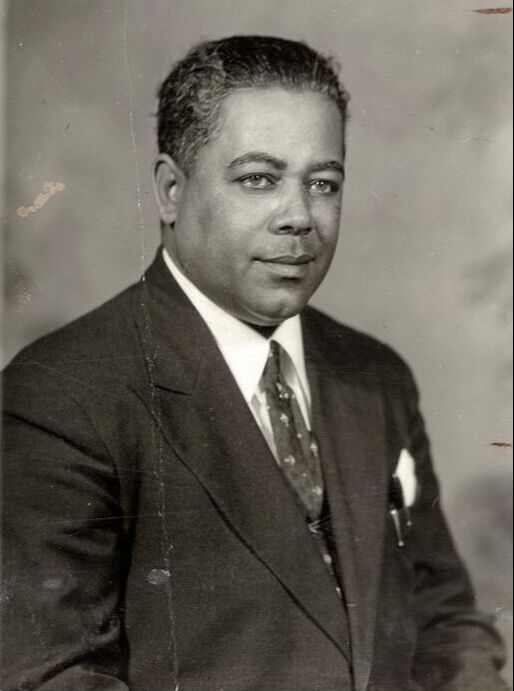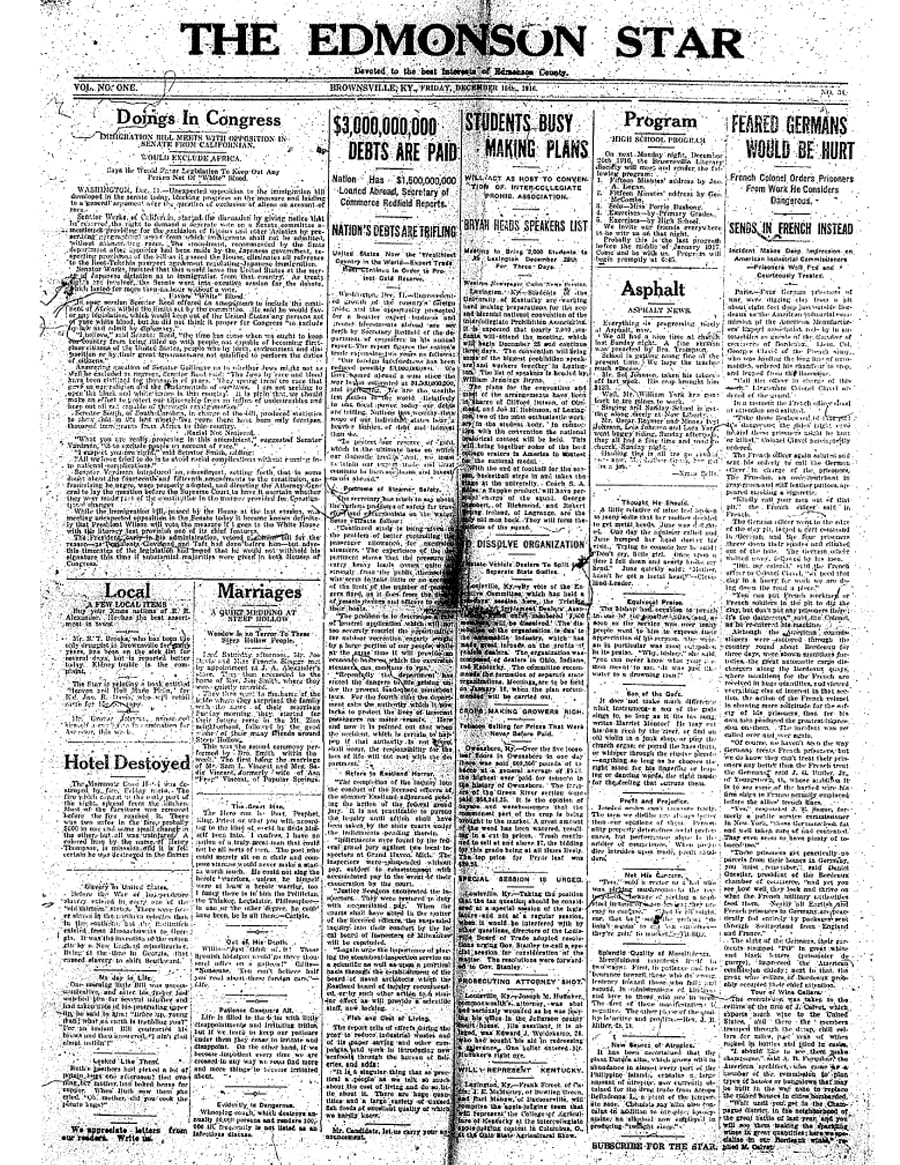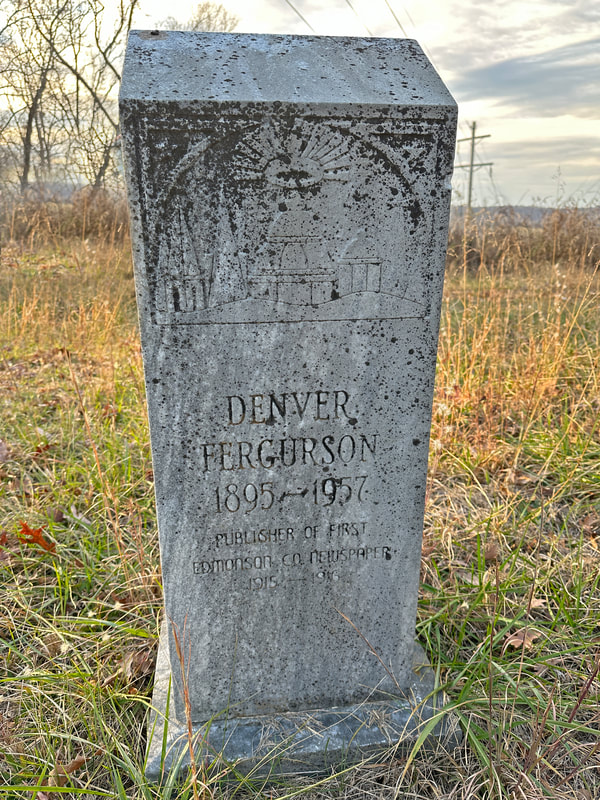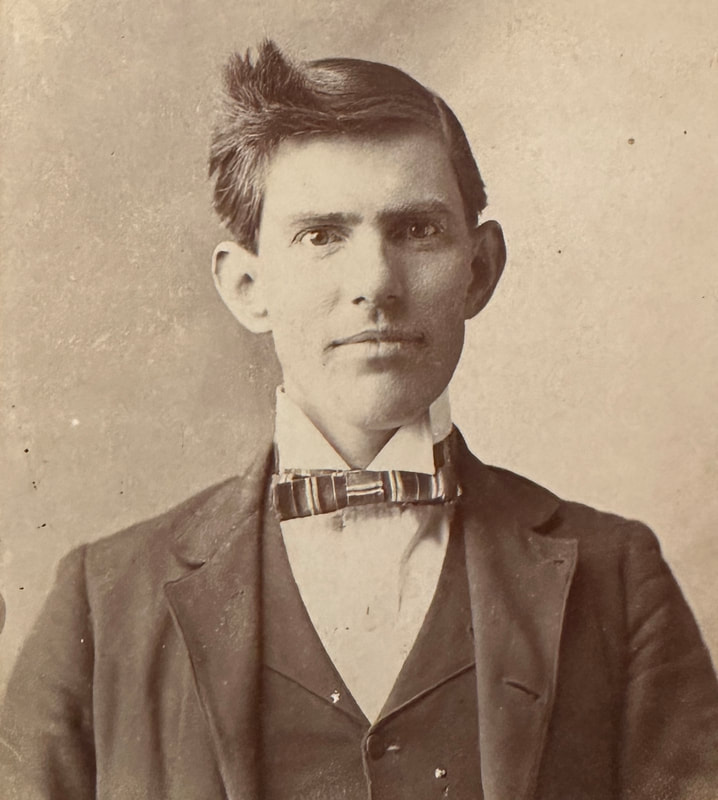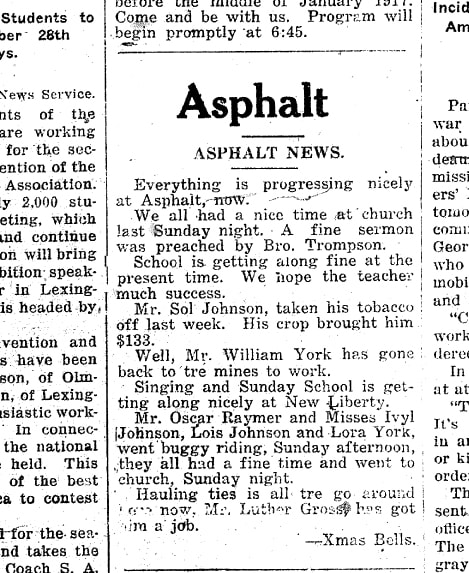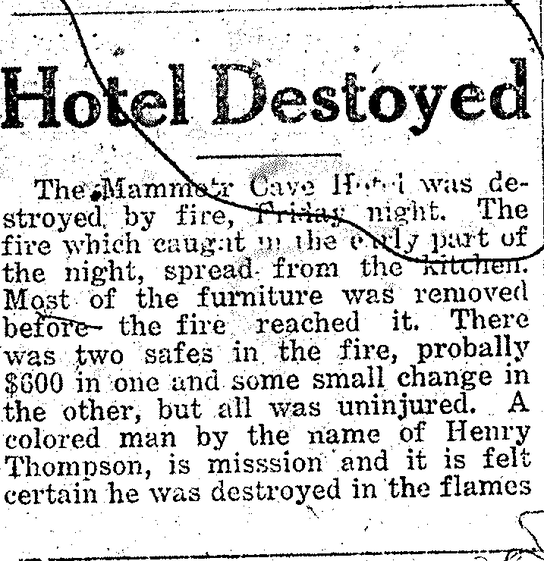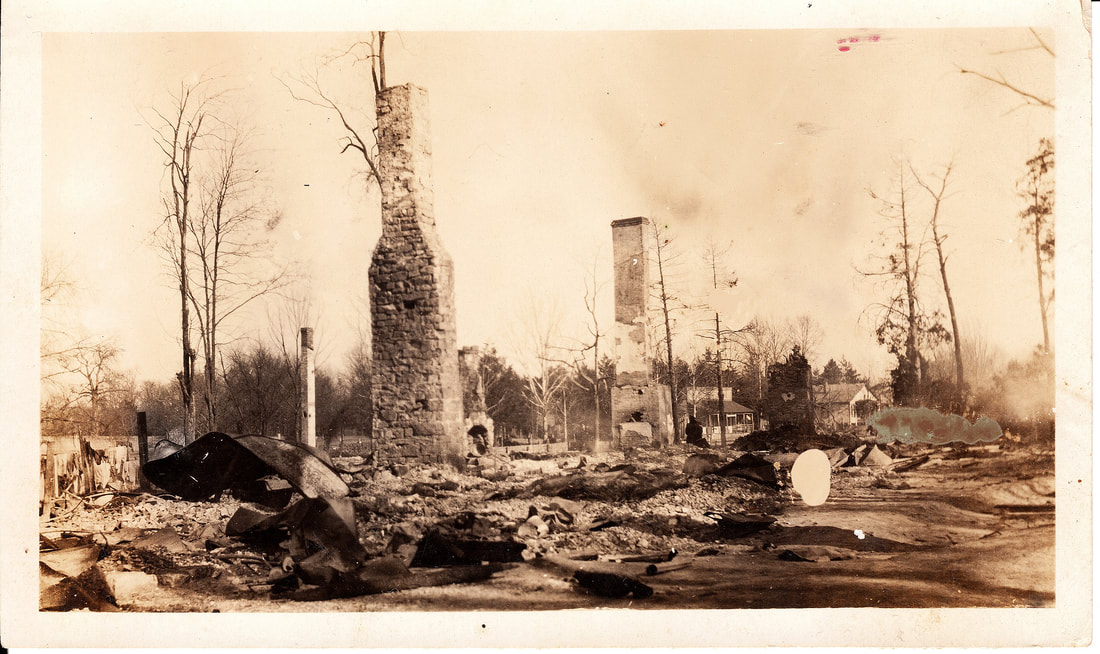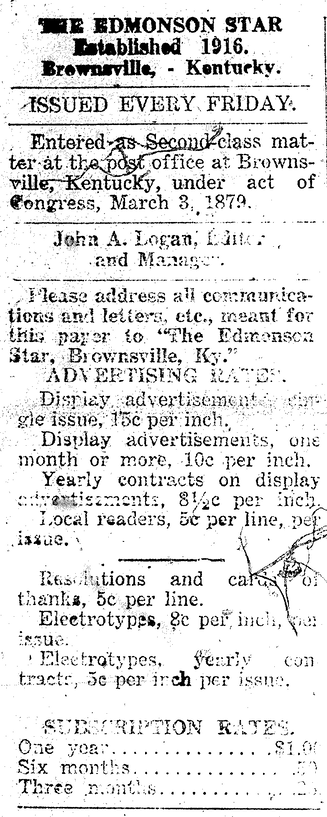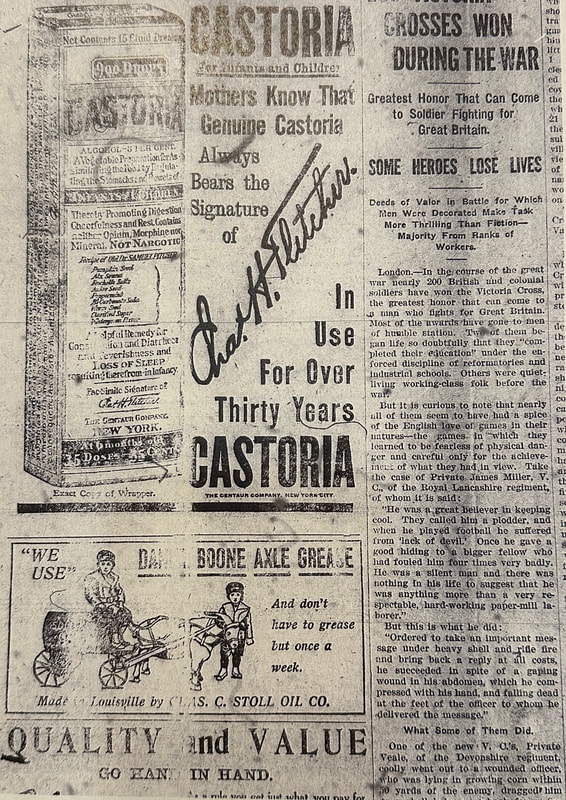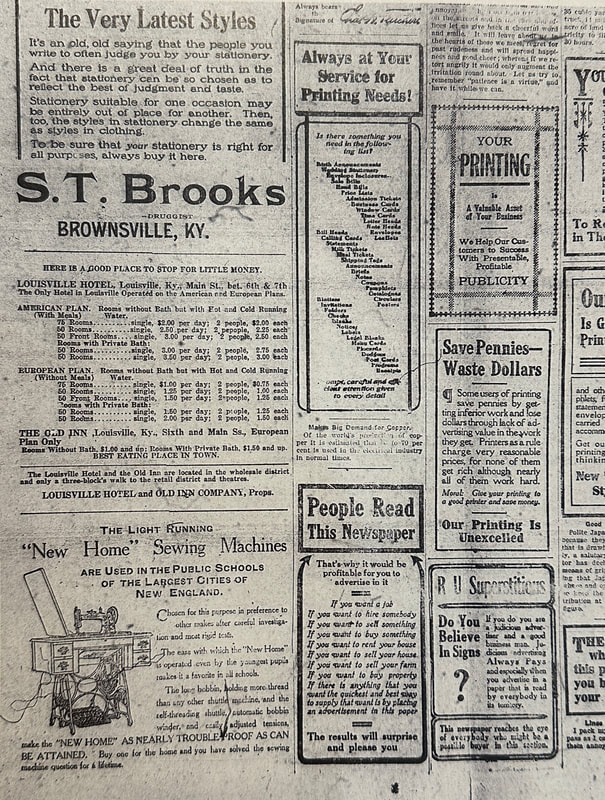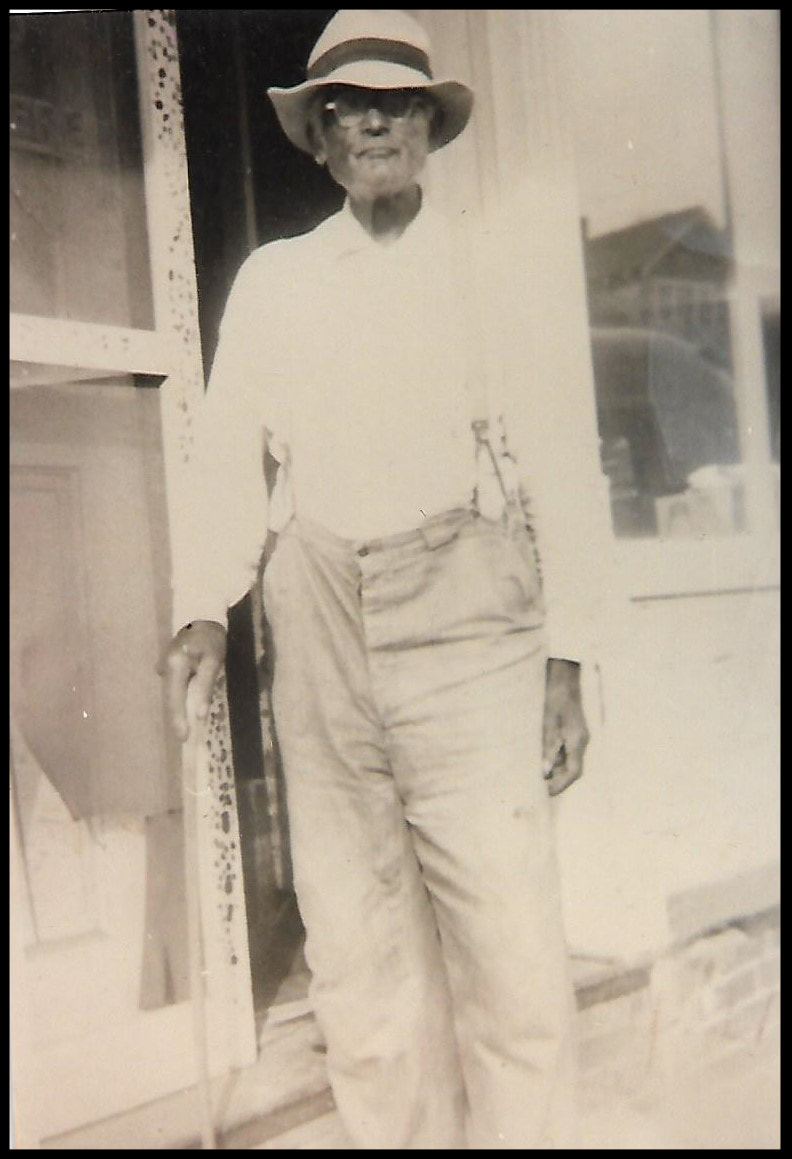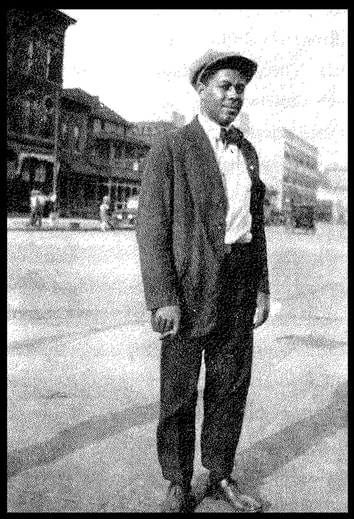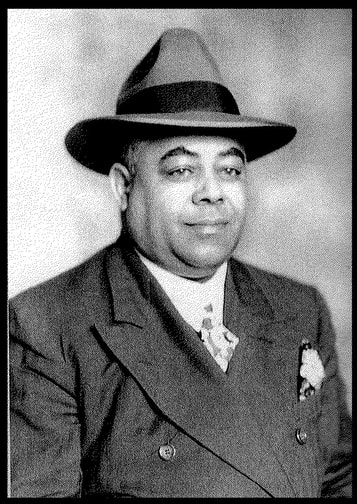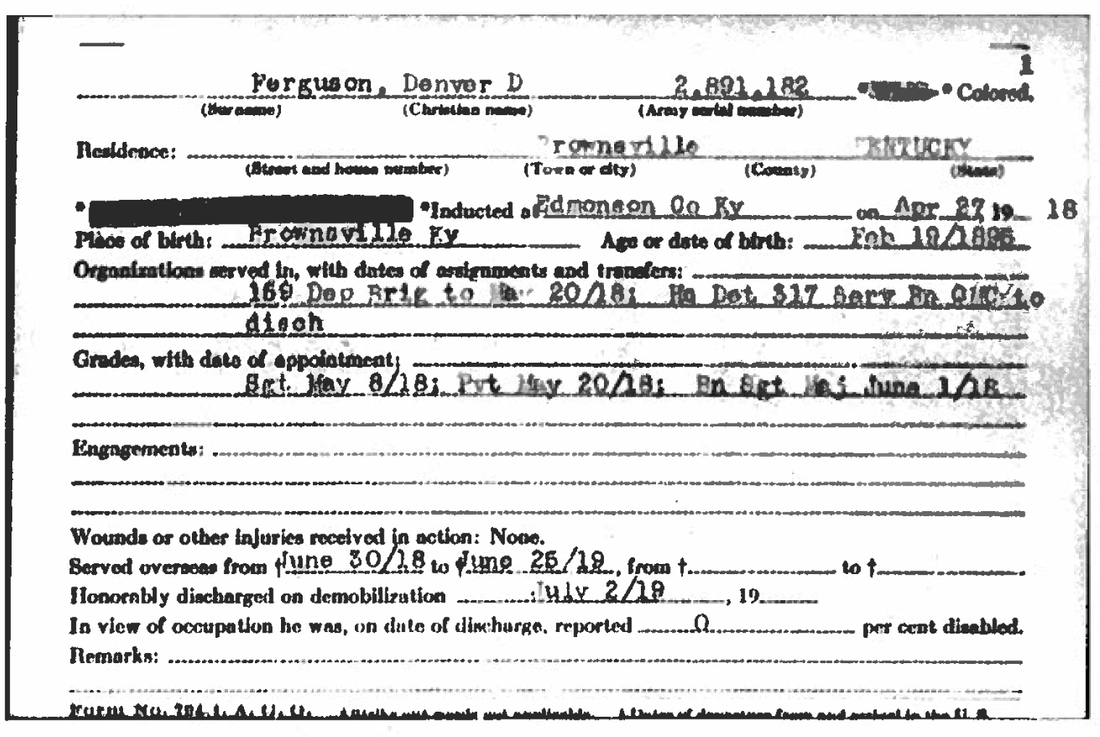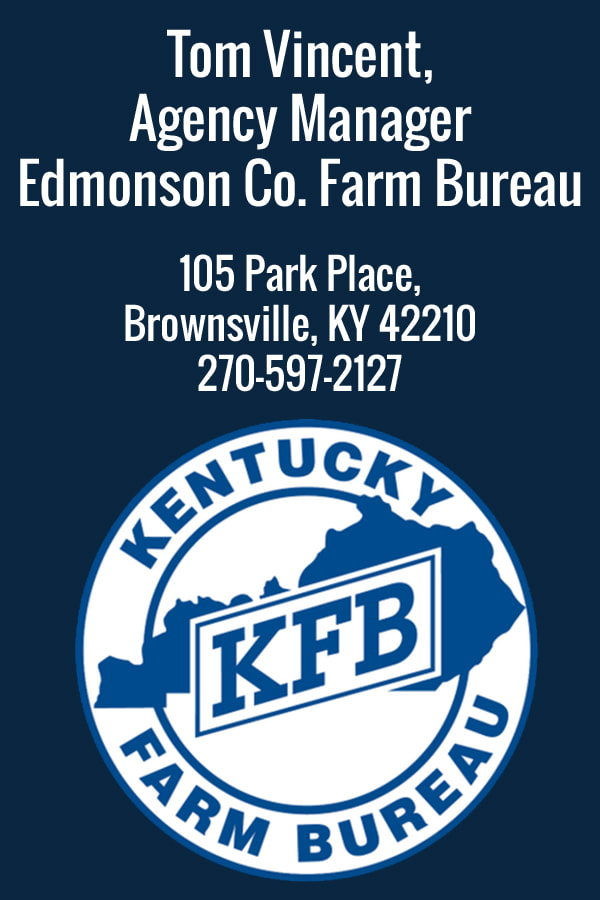|
A Look Into the Origin of Our County's First Published News and the Prominent Black Family That Helped Establish Brownsville As We Know it Today Darren Doyle, story: It has often been said "time flies when you're having fun," so it's hard to believe that the Edmonson Voice is celebrating its 10th anniversary this year. While the Voice was groundbreaking in the way that folks get their local news, another news outlet paved the way for that to happen nearly 100 years before. And no, it's not the newspaper that you think it is. Denver Darious Ferguson, probably the most notable Black businessman from Brownsville, KY that you've never heard of, was the owner and creator of the first newspaper ever published in Edmonson County in 1916. The Edmonson Star, also known as "The Edmonson Star News" was first published in April of 1916, according to the volume and edition numbers. You're probably thinking, "Wow, why didn't I know this?" That's a good question, which brings up the second question: "Who is Denver Ferguson?" Well, he's someone you need to know about. His accomplishments were impressive, and they include not only his newspaper, but also serving in WWI, running a successful printing company, nightclub founder, and a booking agent. He is credited for helping to start a music scene that ended up producing some of the most legendary musicians and performers in music history. Ferguson was born on February 19, 1895 to Samuel and Mattie Whitney Ferguson in Brownsville and died May 11, 1957 in Indianapolis, Indiana at age 62. He is buried in the Ferguson Cemetery, which is not easy to find if you've never been there. The cemetery is located on Cemetery Road, a small street off of Cedar Street, directly behind Cee Bee Food Store. The road turns to gravel and one would think they're heading to someone's farm, but the road leads to the cemetery. Most all records list his burial site at Page-Ferguson Cemetery, but descendants of Mr. Ferguson disagree on the cemetery's name. There are actually two cemeteries in Edmonson County that are predominately used by black families: Page Cemetery, located directly behind the Edmonson County 5/6 Center with access from Vincent Street, and Ferguson, just mentioned. Before we delve into Denver Ferguson himself, let's talk about The Edmonson Star. According to author David Williams, from Black History News and Notes, "Denver attended the local school system in Brownsville and won accolades as an extremely bright student. Although he did not graduate from high school, others recognized his intellectual acumen, and he took a job as a public school teacher. As a very precocious young man, he established a newspaper called the Edmondson [sic] Star News and served as its publisher. Cleverly, he hired a white editor who was highly visible in the community, hoping that newspaper sales would not be affected by racism." That editor was Mr. John A. Logan, who was my great-great grandmother Kate Logan's brother. I had no idea that publishing news in Edmonson County was part of my family tree, which was obviously fascinating for me. The news business was only the beginning of Logan's accomplished career. There are no known original copies of The Edmonson Star left; however, we found one library that had one edition on microfilm, the Young Library at the University of Kentucky. After speaking with the helpful folks at the Edmonson County Public Library, we discovered that our library could borrow the microfilm from UK's library and in a few weeks, I was able to view this information in person, right here in Brownsville. The public library staff was incredibly knowledgeable, and helpful. It took traveling down quite a few rabbit holes and conducting interviews with several folks for the info found in this feature, but the newspaper's local content was certainly a reflection of a much simpler time. I write "local content," because much of it in the edition I found was syndicated. Clips and pieces from national news or cute anecdotes from around the country were much of the content. Much of the information published is uncredited. One example of local updates were from a column entitled "Asphalt--Asphalt News." This included lines like "We all had a nice time a church last Sunday night. A fine sermon was preached by Bro. T(h)rompson." As well as, "Mr. Oscar Raymer and Misses Ivyl Johnson, Lois Johnson and Lora York, went buggy riding, Sunday afternoon, they all had a fine time and went to church, Sunday night." Good to know the author made sure to let readers know that they still made it to church. We also found that several typos containing 'r' instead of 'h' were common in the paper, including plenty of other mistakes. I guess that's where I get it, since my uncle was in charge of that. Another interesting paragraph I found was a column with the headline actually misspelled "Hotel Destoyed" (Destroyed), which describes the burning of the Mammoth Cave Hotel on December 9, 1916. The paper also included publishing information such as edition times, editor and manager, and the rates for advertising and subscriptions. For only one dollar, you could receive the "Star" for an entire year. One thing that hasn't changed in the news business over the last 100 years is the need for advertising. It's the entire revenue stream of the Edmonson Voice and has worked well over our short span of 10 years. The Edmonson Star was no different, and a large portion of content in the Star was both advertising and running their own ads about how others need to purchase their advertising. A couple of our favorites were ads for "Daniel Boone's Axle Grease" and "Castoria," labeled as "A Vegetable Preparation for Assimilating the Food by Regulating the Stomachs and Bowels of Infants and Children." Sounds like both products could accomplish the same goal. Several small ads appeared from the paper itself, like "People Read This Newspaper," and "Do You Believe in Signs? If you do, you are a judicious advertiser and a good business man. Judicious advertising Always Pays and especially when you advertise in a paper that is read by everybody in its territory." We couldn't agree more. We also enjoyed one column that stated, "Come in and pay that overdue subscription account. Don't wait until the paper stops." While the Voice doesn't have subscriptions, we have advertising accounts with our clients, and many of them go overdue. It's good advice. Maybe we should try running the same type of ads? Denver's parents were very well known in Brownsville, being prominent and well-respected citizens. According to interviews and other research, the Fergusons owned more property in Brownsville than anyone. Not only that, but their generosity paved the way for two local churches, Brownsville General Baptist and Cedar Grove Baptist to start, as they donated the land for the buildings. In addition, they owned the property where the old Kelwood sewing factory used to be, as well as the Edmonson County Public Library, hence the name "Ferguson Street." They also owned the entire block where the old service station formerly stood, at the fork of Main Street and Washington Street. Two different sources said that Sam's generosity continued through donating land for one of the local schools, however, we could not confirm that through county records. Sam's wife, Mattie, served as a mid-wife to many mothers in Brownsville and Edmonson County and was also known as a folk medicine practitioner in the community. In an interview with longtime Brownsville resident Scottie Woodcock, now at age 91, he shared memories of the Fergusons, who he knew well. "Their house was a big, two story block house where City Hall is now. The City tore it down to build City Hall there," he said. "It was a very nice home. They were high-class." Woodcock said he remembered when the Fergusons donated the land for Brownsville General Baptist. "I was about 13 years old when I helped dig the basement of that church," he said. "I was a charter member of that church and we used a team of mules and an old pond scoop to dig that basement." Sam ran a successful concrete block manufacturing business, where he made the blocks one at a time, using concrete and a form. While the family was respected in town, racism was still present. In the book "The Chitlin' Circuit and the Road to Rock 'n' Roll" by Preston Lauterbach, which can be purchased here, the author said that Sam was able to devise his own expression of the motto "When I die, bury me upside down so the whole world can kiss...." Lauterbach wrote "Sam Ferguson owned more of the town than any dozen white residents combined, but they still called him Uncle Sam. Among his numerous property acquisitions over the years was a grassy hilltop at Brownsville's north side. The highest point in town, Sam christened it the Ferguson Cemetery and commissioned a pair of ten-foot-high granite obelisks for himself and his wife, Mattie. Though white Brownsville insisted on looking down on the Fergusons in life, it'd have to look up to them for eternity." Scottie said that Sam smoked a pipe all the time. "He'd come into my dad's store and smoke that pipe. I was 18 years old and he gave me a silver dollar--said he'd give it to me if I'd never smoke. He was always so good to me. I never did tell this, but I drove up there last year, I went up there where he was buried and it was all grown up. And right here was a man that was good to me, he was in my dad's store practically everyday, I felt so bad about it I mowed it myself. I went back to my childhood where an old man was good to a kid." Sam's influence on his boys, both Denver and Sea Ferguson, was evident, as the boys both went on to build great wealth in Indianapolis with sharp, innovative ideas. Not even a high school graduate himself, Denver became a school teacher in Brownsville in his late teens. With Denver's desire for entrepreneurship, Sam started Denver in the printing business after purchasing a small press through Sears and Roebuck for him, according to local historian and retired educator, Norman Warnell. "Denver used that press to get into the printing business, and I heard about that paper, but it wasn't around long I don't think," said Warnell. "He eventually went to Indianapolis and I reckon he took that press with him and was printing everything from handbills to gambling tickets, and that's when he first started making money. I don't know for sure, but he's probably Edmonson County's first millionaire." The printing business not only was the origin of The Edmonson Star, but it also provided other printing services like cards, handbills, and other paper needs. The newspaper didn't last long because Denver was drafted to serve in World War I in April of 1918. "Denver was no slouch, he ended up as the Battalion Sergeant Major (the highest enlisted rank)," said Lt. Col. Floyd Houston, U.S. Marine Corps (ret), an Edmonson County resident, military historian, and former Commander of the local VFW Chapter 6937.
Denver served overseas from June 30, 1918 to June 25, 1919. He was honorably discharged on July 2, 1919. While John A. Logan continued to manage the newspaper upon Denver's military service, Logan also had other aspirations and eventually became one of Edmonson County's top prosecutors. Upon Denver's return to Brownsville, Ferguson loaded up his printing press, closed the paper and moved his operation to Indianapolis. Although the Edmonson Star was short lived, once Denver got to Indianapolis, he was involved in decades of lucrative business. As he continued his printing business in Indiana, one of his first big breaks, despite the hurdles of racism and unfair treatment, was printing tickets for a gambling street lottery game, disguised as a baseball novelty. As read in Lauterbach's book, "Denver designed his daily lottery slips to resemble a baseball scorecard, with columns for runs, hits, and errors for every game scheduled on a given day. Players filled their three-digit "gigs" into a tea's runs, hits, and errors column..." "...The outcome of real baseball games, however, had no bearing on the winning numbers. The daily report of the Indianapolis bank clearings and debits determined the winners. The clearings and debits typically ran seven or eight digits long, so players guessed which numbers would appear in the hundred-thousandth, ten-thousandth, and thousandth spots. Players could bet on as many three-digit possibilities as they could afford, logging their predictions on a baseball ticket in a team's runs, hits, and errors box, and paying their runner accordingly." Lauterbach wrote that the game had to appear to at least be intended for clean amusement, since gambling devices were illegal. "Far more important, Denver could control one or two locally generated bank reports far more simply than he could rig outcomes or reported scores of baseball games. Bank reports came out in the evening paper. Of course, wise policy bankers recognized the importance of winning, and arranged for a daily hit or two on lightly played gigs." From there, Denver began to acquire wealth and begin investing in other ventures. His younger brother Sea Ferguson soon joined him and their empire continued to grow. Lauterbach's book tells how Denver became one of the founders of the Black music scene in Indianapolis during his 30-year span of being an influential businessman. His clubs would host all the great Black musicians and bands, not only including those like Duke Ellington and Count Basie, but also great talent that would never become household names. His role in the nightclub scene he started in Indiana began a network of entertainers performing in what was known as "The Chitlin' Circuit," which stretched to Texas, Louisiana, Georgia, and then to Memphis. It would be the circuit that spawned the careers of B.B. King, Little Richard, and even James Brown. After troubles with the IRS and other race-based hurdles, the Ferguson brothers later started a booking agency that brought entertainers like Duke Ellington to the Indianapolis area. Sea went on to build a very successful bowling alley, only the third ever built by a Black man. Scottie Woodcock said Sea Ferguson also negotiated the selling of his family's property for the sewing factory in Brownsville in the early 70s, where Woodcock shared a role. "Sea drove the biggest car I'd ever seen," said Woodcock. David Finnell, age 64, and a grandson of Denver Ferguson, said although he never met his grandfather, who died before his was born, he was very familiar with his mother's accounts of Denver, and they weren't normally in a positive light. "None of us knew him," said Finnell, of he and his siblings. "We have pictures of him, we have stories of him. I'm looking at a newspaper clipping right now on my whiteboard about The Sunset Terrace here in Indianapolis, it's an announcement in the newspaper about it's grand opening (owned by Ferguson). There was plenty about him in the Indianapolis papers. The Indianapolis Recorder is still a Black-owned, Black-operated, or a Black-focused newspaper and they carried many stories on him because he was the highlight of the Black community." Denver would later suffer from health problems and a third and final marriage to a pen pal woman in Germany that ended as soon as it began. It would also prove to be a costly one, losing most of his fortune in his final years due to health and divorce. Denver's life story can't be told in just one article or book. With months invested in the story of Denver Ferguson, which began with my interest in our county's origin of published news, I have learned a great deal about our community and its beginnings, and have a goal to share more about this family. Knowing about our past gives us reason to either proudly reflect who we are or learn from mistakes. Who knows, maybe the Voice should try publishing very simple or amusing stories here and there like they did in the Star over 100 years ago? I'll start with one I know, firsthand: Darren Doyle, guitar enthusiast, bought yet another guitar last week without first consulting his wife, Debbie. A thorough conversation was had by the couple, with Debbie rolling her eyes several times. While Mrs. Doyle did not demand that he sell the guitar, both agreed it was in Darren's best interest to clean the kitchen that evening and schedule a nice dinner at an area restaurant for her as soon as possible. Denver Ferguson's incredible story all started in Brownsville, KY, a population that is 98% White, where Brownsville City Hall now stands, in the home of his parents, who were children of slaves. While Edmonson County's first newspaper is long gone, many would agree that the Fergusons were all Edmonson Stars. Special thanks to Josh Howard, Lt. Col. Floyd Houston, The Indiana Historical Society, Lynn Skaggs, Norman Warnell, Preston Lauterbach, David Finnell, Scottie Woodcock, Mammoth Cave National Park, Luwanda Brooks, Alicia Edwards, and all the resources at the Edmonson County Public Library.
20 Comments
Barry Cowles
2/12/2024 02:13:31 pm
Excellent story, I love history, great read
Reply
Karen Renfro
2/12/2024 02:37:58 pm
Absolutely loved this article. Would love to see more about the history of Edmonson County as well as everyday news such as the purchase of a new guitar. We have such a treasure in Mr. Norman Warnell and Mr. Scottie Woodcock. It would be a shame to loose such a wealth of information before it could be passed on.
Reply
Wendy Sowders
2/12/2024 03:35:35 pm
I have to admit THIS is the BEST article you have published since I began reading the Edmonson Voice!
Reply
NORMAN WARNELL
2/12/2024 04:18:19 pm
Well researched, and well written !
Reply
JO ETTA JOHNSON
2/12/2024 04:36:34 pm
I LOVED this article and truly appreciate all the time and effort it took on your part in order to bring it to us. Keep up the good work - you're the very best! Sincerely, A. J. and Jo Etta Johnson
Reply
Carmon Hughes
2/12/2024 04:49:01 pm
What a special story! I love this!
Reply
Steve Doyle
2/12/2024 05:00:33 pm
Having lived in Edmonson County 99.99% of my life and being interested in the history of my family and history in general this article has held me spellbound. I absolutely loved it. We live in (in my opinion) one of the most unique an blessed places in the world. Publish stories like this every opportunity you get. Thank you for all the time and work you put into this story.
Reply
Malea and Ed Vincent
2/12/2024 07:46:46 pm
This was an interesting and exceptionally researched story. I never knew or heard of the Edmonson Star. I remember my grandfather Fred Morris talking about the Fergusons. Love history and grateful for the Edmonson Voice.
Reply
Phyllis W Miller
2/12/2024 07:57:41 pm
An excellent article, very well researched and well written, very proud of you Darren!
Reply
Jeff Haynes
2/12/2024 09:25:04 pm
Very interesting story. My great grandfather’s name was Oscar Raymer, I wonder if I am related to the Oscar Raymer that was mentioned in the newspaper story? I have a picture on my refrigerator of him holding me when I was about 3 years old.
Reply
Debbie Doyle
2/13/2024 01:20:49 am
I’ve never been a history fan, but I found this story very interesting! I’m sure you put a great deal of time and effort into putting all of this together, and I really appreciate knowing a little more about the greatest place in the world to live, and raise a family (editor included)!
Reply
Joy Johnson Guss
2/13/2024 06:53:06 am
I come from a long line of prominent Edmonson County families, my maternal grandmother being Edna Ray Sanders, daughter of Clara Spillman Ray, who was the daughter of John Spillman, a state representative in the late 1800’s and large land owner in the county. John Spillman’s daughters married into well known county families, so I am literally cousins to Renfros, Whittles, Reeds and the like. Both of my parents, A.J. & Jo Etta Johnson. both born in the 1940s, are lifelong Edmonson Countians, except for a brief period of about 20 years, while I was in school age, while my dad moved to a Hardin County, for a job opportunity. I felt like I grew up in Edmonson county, as we spent every weekend with either my Mamaw & Papaw Johnson (born 1904/1910) or my Mamaw & Papaw Sanders (both born around 1910). I love Edmonson County so much I moved back in my 20’s and taught school at Brownsville Elem/South Edmonson Elem for almost 10 years, before moving to Nashville where I now live. I still own my property in Edmonson County and plan to retire there in a few years. Ironically, one of the main reasons I moved to Nashville was because I wanted my son to grow up in, and myself to live in, a more racially diverse place.
Reply
Mary Jo Reinecke
2/13/2024 07:16:02 am
Very interesting article, and timely for February black history month.
Reply
Autumn Meredith Scruggs
2/13/2024 07:23:44 am
This could be pure coincidence, but do you think that his knowledge of Kyrock asphalt had anything to do with Kyrock asphalt being used to pave the first Indy 500 track. I’ve been told that my entire life and I have read a handful of articles about it. With him being from Brownsville and ending up in Indiana, I thought maybe. Anyway, I enjoyed your article and thought it was well written and well researched.
Reply
Valerie Ballow
2/13/2024 09:28:30 pm
Great article on the great uncle that I never had the opportunity to know. Thank you
Reply
Yvette Ferguson-Smith
2/14/2024 04:14:57 pm
Thank you for such a well put together and informative article. My grandfather was Denver's uncle, Isaac Ferguson. Denver is included in my family tree on Ancestry.com and Denver's daughter Carole, provided me with a lot of the historical information mentioned, before her passing. However, what I really loved was the first hand knowledge of Scottie Woodcock and I've heard of the great historical work of Norman Warnell. Their knowledge is priceless!
Reply
JANETTE WOODCOCK
2/14/2024 05:54:24 pm
loved reading this
Reply
Michelle Wilson
2/15/2024 12:43:19 pm
Is there any way to nominate this article for some kind an award? This is what local journalism is supposed to be. Thank you for this story!! This story and article needs recognition!
Reply
David Finnell
6/16/2024 10:39:19 pm
My cousin Vickie Edmonds here in Indianapolis connected me with this article's author, Mr Darren Doyle, with whom I greatly enjoyed a conversation.
Reply
Your comment will be posted after it is approved.
Leave a Reply. |
Archives
July 2024
|
|
Copyright 2014-2024 The Edmonson Voice.
The Edmonson Voice logos are registered trademarks. Call or text: 270-597-6550 [email protected] PO BOX 94 BROWNSVILLE, KY 42210 CLICK HERE FOR DEADLINE INFO |




